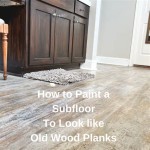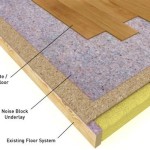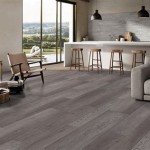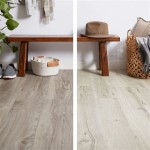Engineered Wood Flooring vs. Hardwood Laminate Costs: A Detailed Comparison
Choosing the right flooring for your home can be a daunting task, with numerous options available, each with its own advantages and drawbacks. Two popular choices are engineered wood flooring and hardwood laminate. Both offer the beauty and durability of real wood at a relatively affordable price, but understanding their differences, particularly in terms of cost, is crucial to making an informed decision. This article will delve into a detailed comparison of engineered wood flooring and hardwood laminate costs, highlighting factors that contribute to price variations and providing insights for budgeting.
Material Costs
Engineered wood flooring, as its name suggests, is engineered to have a real wood veneer layer on top of a plywood core. The top layer, typically 1/16" to 1/4" thick, is the visible surface that provides the aesthetic appeal of real wood. The core, made of multiple layers of plywood, provides structural stability and durability. The price of engineered wood flooring is influenced by several factors, including:
- Wood Species: The type of wood used for the veneer significantly impacts cost. Exotic hardwoods like walnut or mahogany are more expensive than domestic species like oak or maple.
- Wood Grade: Wood grades reflect the quality and consistency of the veneer. Higher grades, with fewer knots and imperfections, command higher prices.
- Thickness: Engineered wood flooring is available in varying thicknesses. Thicker planks, offering greater durability and more potential for refinishing, are generally more expensive.
- Finish: The type of finish applied, whether it's a stain, sealant, or pre-finished, can also impact the overall cost.
Hardwood laminate flooring, on the other hand, is a synthetic product that mimics the look of real wood. It features a photograph of wood grain printed on a high-density fiberboard core, topped with a protective wear layer. The core is typically made from melamine-impregnated paper, providing strength and moisture resistance. The key cost factors for hardwood laminate flooring are:
- Image Quality: The clarity and realism of the printed image, mimicking different wood species and patterns, directly influence the price. Higher-quality images tend to be more expensive.
- Wear Layer Thickness: This layer protects the printed image from scratches and wear. Thicker wear layers, providing greater durability and longevity, are priced higher.
- Installation Method: Some laminate flooring planks feature a click-lock system, allowing for easier installation and potentially lowering labor costs.
In general, hardwood laminate flooring is usually more affordable than engineered wood flooring. However, this can vary depending on the specific product chosen and the desired quality.
Installation Costs
Both engineered wood flooring and hardwood laminate flooring require professional installation for optimal results. However, there are significant differences in installation costs between the two. Engineered wood flooring, being thicker and heavier than laminate, often requires more labor time and specialized tools for cutting and fitting. This can contribute to higher installation costs.
Hardwood laminate flooring, due to its thinner and lighter nature and often click-lock installation system, is typically easier and faster to install. This can translate to lower labor costs compared to engineered wood flooring.
It's important to note that installation costs can vary depending on factors like:
- Floor Size and Complexity: Larger and more complex floor areas will require more labor time, leading to higher costs.
- Location and Labor Availability: Labor costs can fluctuate based on location and the availability of skilled installers.
- Subfloor Preparation: If the existing subfloor needs repairs or leveling, additional costs may arise.
Maintenance and Durability
Engineered wood flooring is known for its durability and ability to be refinished multiple times. It can withstand moderate foot traffic and can be sanded and refinished to restore its appearance. While the refinishing process can be costly, it extends the life of the flooring significantly.
Hardwood laminate flooring is less durable than engineered wood flooring. Its wear layer, while protective, can be scratched or damaged over time, especially in high-traffic areas. It cannot be refinished, meaning that once the wear layer is compromised, the flooring needs to be replaced. However, laminate flooring is waterproof and resistant to stains, making it suitable for kitchens and bathrooms.
Overall Cost Analysis
Ultimately, the overall cost of engineered wood flooring vs. hardwood laminate flooring depends on a multitude of factors. The initial price of engineered wood flooring may be higher than laminate, but its durability and refinishing capabilities can make it a more cost-effective choice in the long run. Hardwood laminate flooring, while initially cheaper, may need replacement sooner, potentially offsetting its initial savings.
For homeowners seeking a timeless, natural look and willing to invest in long-term durability, engineered wood flooring can be a wise choice. However, if budget constraints are a primary concern and the need for refinishing is less important, hardwood laminate flooring might be a suitable alternative.

Engineered Hardwood Vs Laminate Flooring

Engineered Wood Flooring Vs Laminate Albany Woodworks

Solid Vs Engineered Hardwood Which Is Better

Laminate Vs Hardwood Vinyl Flooring 50floor

Hardwood Vs Laminate Flooring What S The Difference

Engineered Hardwood Vs Laminate Flooring

Laminate Vs Hardwood Flooring Pros Cons And Which Is Best For You

Solid Vs Engineered Laminate Wood Flooring Choose Wisely

Engineered Hardwood Vs Lvp Wood Or Vinyl Flooring Reallyfloors America S Est

Solid Vs Engineered Hardwood Which Is Better
See Also







